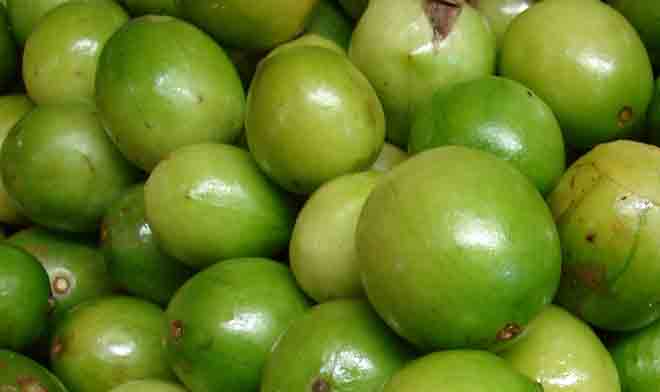Although Brazil’s agricultural industry is quickly becoming one of the largest in the world, indigenous crops, like umbu, remain an integral part of the country’s rich genetic biodiversity.
Grown almost exclusively in the semi-arid northeast region of Brazil known as Caatinga, the umbu tree’s robust root system can hold up to 3,000 liters of water in its tubers for several months. Fittingly, umbu means ‘tree that gives drink.’
Nicknamed the Brazil plum, the umbu is a citrus fruit that can be eaten fresh or made into juices and james by boiling down the juice. Local residents mix the fruit’s pulp with milk and sugar to make umbuzada, a common meal substitute for rural families during the dry season.
Some varieties of umbus are as small as cherries, while others reach the size of lemons. The outer peel ranges from a bright yellow to a vibrant green. The juice is sour, but tantalizing, and rich in vitamin C.
While the umbu isn’t typically well known beyond the Caatinga region, in the last decade the Slow Food Foundation and the Austrian NGO, Horizon 3000, have supported a cooperative farming model and exported locally produced value-added products using the harvested umbu fruit.
Brazil is the world’s leading exporter of coffee, sugar, and orange juice—but none of these agricultural products are native to the country that is also one of the world’s top producers of soybeans, beef, and chicken.
Planting and preserving the umbu promotes biodiversity and supports a more resilient agricultural system. The umbu tree developed valuable characteristics that allow it to thrive in the hot, dry Caatinga climate. Maintaining genetic biodiversity and learning from indigenous species allows farmers and scientists to better adapt to changing soil conditions, droughts, floods, pests and overall climate change without increased chemical inputs.
How can you prepare Umbu?
The Umbu can be eaten fresh or made into jams or other sweetened preserves like fruit cheese. In the Sertão, it is cooked down until the peel and the pulp separate. Then, the liquid is poured off, it is mixed with sugar and cooked for another two hours. After the pulp has been reduced to a glossy gelatin (called geléia), it retains a slightly astringent flavor. In addition to the thick paste made by this long, slow boiling process, the Umbu is the base of fruit juice, vinagre (the juice pressed from overripe fruit), and jam (made by pressing together layers of dried Umbu paste).
Sign up for Food Tank’s FREE Weekly Newsletter. More than 110,000 Subscribers And Counting. Click HERE to join.










